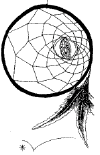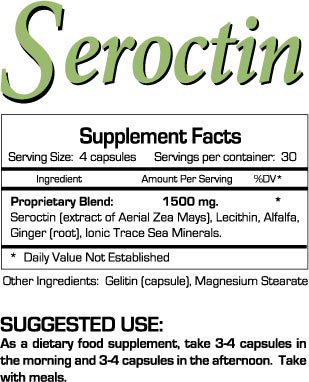THE DANGERS OF PROZAC:
Part 1By
Gary Null, Ph.D. and Martin Feldman, M.D.
Note: The information on this website
is not a substitute for
diagnosis and treatment by a qualified, licensed professional.
Nearly a decade has passed since Prozac, the antidepressant drug, was
introduced to the market and quickly achieved the label of a "wonder drug."
During that time, Prozac has indeed helped many people who suffer from
severe depression. But the early claims that Prozac would alleviate
depression without causing harmful side effects have not been realized.
Indeed, just the opposite has proven to be true. Prozac has produced
serious side effects in some users, prompting a host of lawsuits against Eli
Lilly & Co., the drug's manufacturer.1
These adverse effects include akathisia (a condition in which a person feels
compelled to move about), permanent neurological damage, and suicidal
obsession and acts of violence.
In 1990, the Citizens Commission on Human Rights (CCHR), a Scientology
organization that investigates psychiatric violations of human rights, wrote
a letter to the House of Representatives in which it stated, "The wide use
of Prozac has been largely generated by Lilly's false claim that Prozac has
fewer side effects than other antidepressant drugs. This is a serious
misrepresentation to the public which is destroying lives."2
The letter notes that Eli Lilly changed its advertisements to remove the
statement that Prozac causes "fewer side effects." In one ad, for example,
the manufacturer said instead that the drug produces "fewer tricyclic-like
side effects." However, the CCHR believes Prozac should be recalled. The
letter concludes, "...the drug should be immediately recalled as a serious
health hazard, and kept off the market until the manufacturer can guarantee
that the drug will not kill more people."
A 1990 article in Trial, published by the Association of Trial
Lawyers of America, also points to the "dark side" of Prozac, noting that it
not only produces troubling side effects but also can be harmful and even
deadly when combined with certain other drugs. "Prozac has greatly benefited
many severely depressed patients. Others, however, have suffered serious
side effects," states the report. "Eli Lilly & Co.'s failure to adequately
warn physicians of side effects and of the danger of drug interactions has
doubtless resulted in injuries that could otherwise have been avoided. Now
that the dangers are better known, doctors should inform patients of these
risks."3
THE SIDE EFFECTS OF PROZAC
The CCHR letter notes that the Food and Drug Administration (FDA)
received almost twice as many adverse reaction reports on Prozac in two
years than it did on Elavil, another antidepressant, in 20 years. Even
Valium, a widely used prescription drug, accumulated fewer adverse reaction
reports in 20 years than Prozac did in two years, says the CCHR.4
Prozac relieves depression by affecting the level of serotonin, a
neurotransmitter that connects receptor sites and fires nerve cells. The
CCHR letter states that the drug's chemical structure, which is unlike that
of other medications, makes it "an utter wild card" in predicting what
effects it may have.5
And yet, doctors not only prescribe Prozac for depression, its approved use,
but also for smoking cessation, weight loss and other problems.
The adverse effects of Prozac can be traced to the drug's effect on brain
chemistry. As Peter R. Breggin, M.D., explains in Talking Back to Prozac:
What Doctors Aren't Telling You About Today's Most Controversial Drug,
Prozac acts as a stimulant to the nervous system.6
Therefore, it can produce side effects that mimic those of amphetamines and
are exaggerations of the desired effects of Prozac in relieving
depression.
According to Dr. Breggin, the FDA psychiatrist who wrote the agency's
safety review of Prozac stated that the drug's effects--including nausea,
insomnia and nervousness--resembled the profile of a stimulant drug, rather
than a sedative.7
Dr. Breggin adds that nearly all of the side effects of Prozac listed in the
Physician's Desk Reference "fit into the stimulant profile." Among
others, these stimulant symptoms include headaches, nervousness, insomnia,
anxiety, agitation, tremors, weight loss, nausea, diarrhea, mouth dryness,
anorexia and excessive sweating.8
In short, a drug that acts as a stimulant also can overstimulate
the body systems. In his book, Dr. Breggin offers the example of a person
who takes Prozac to relieve depression (the beneficial effect) and suffers
from agitation and insomnia (the negative effects). These adverse effects
"are inherent in the stimulant effect that produces feelings of energy and
well-being," Dr. Breggin writes. "In this sense, the difference between
'therapeutic effects' and 'toxic effects' are merely steps along a continuum
from mild to extreme toxicity."9
With that in mind, what follows is a discussion of some of the side
effects that have been associated with Prozac:
Akathisia. As noted, people may suffer from a variety of side
effects when the central nervous system is overstimulated. Studies show that
two effects of overstimulation--akathisia and agitation--are experienced by
some people who take fluoxetine (the chemical name for Prozac).
Simply put, akathisia is a need to move about. The person feels anxious
or irritable and is compelled to stand up, pace, shuffle his or her feet and
the like. The inner sense of anxiety, says Dr. Breggin, is "like chalk going
down a chalkboard, only it's your spine."10
Prozac also can cause extreme agitation, and this condition often is
associated with akathisia.
Eli Lilly states in Prozac's information sheet that the drug can cause
akathisia. However, Eli Lilly has said that less than 1 percent of Prozac
users experience this side effect, while a 1989 report in the Journal of
Clinical Psychiatry estimates that the actual share of Prozac users who
suffer from akathisia is between 10 percent and 25 percent.11
Other reports on the link between Prozac and akathisia have appeared in
psychiatric journals.12,
13, 14
Akathisia is related to a breakdown in the ability to control impulses.
Thus, it has been associated with violent and suicidal acts in a number of
studies and reports. A two-year study published in Psychopharmacology
Bulletin in 1990 found a higher akathisia rating among people
involved in violent acts than those who observed the incidents.15
Another double-blind clinical study established a link between akathisia and
suicidal or homicidal thoughts, according to a report in the Journal
of Clinical Psychopharmacology.16
Akathisia was associated with acts of extreme violence in an article in
the American Journal of Forensic Psychiatry, which described
three patients who attacked other people or committed murder.17
Other researchers have noted that patients who take Prozac and develop
akathisia may, in turn, become preoccupied with thoughts of suicide.18,
19 A 1991 article in the Journal of Clinical Psychiatry,
for example, reports on three patients who attempted suicide during
fluoxetine treatment and were then reexposed to the drug. The second time
around, all three developed severe akathisia and said the condition made
them feel suicidal; they also attributed their previous suicide attempts to
akathisia.20
Psychosis. A person's nervousness may reach a psychotic level when
the overstimulation of the nervous system is severe. People can become
paranoid, extremely depressed, suicidal and dangerous to others around them.
They may behave in bizarre ways, perhaps by spending all their money or
directing traffic naked. The mental effects of fluoxetine treatment have
been discussed in several psychiatric reports.21,
22
More specifically, Prozac's ability to induce mania in patients has been
documented in a number of medical journals.23,
24, 25, 26, 27, 28, 29, 30 This adverse effect supports Dr.
Breggin's position, as stated earlier, that a drug's therapeutic effects and
its toxic effects are simply a matter of degree in the same continuum. As he
writes in his book, "Many patients who swear by Prozac are probably
experiencing imperceptible or barely perceptible degrees of mania."31.
Suicide. Beyond the link between akathisia and acts of violence,
some users of Prozac have said that the drug caused them to develop suicidal
thoughts and obsessions. In some cases, the use of Prozac allegedly has
prompted people to commit murder. This aspect of the drug has generated
controversy and led to discussions in both medical publications and the
general media about the connection between Prozac and acts of violence.32,
33, 34, 35, 36, 37, 38, 39, 40, 41, 42, 43, 44, 45, 46
It should be noted that in several studies, the findings suggested that
Prozac did not lead to suicidal preoccupation or found that the drug was not
associated with an increased risk of suicidal acts. Other reports on
clinical experiences with Prozac and its effects following an overdose
support the safety of the drug.47,
48, 49, 50, 51, 52, 53, 54
However, other research supports the contention that Prozac leads some
users to become suicidal or violent. In his book, Dr. Breggin says that it
is the drug's ability to cause a variety of psychological and neurological
disorders that underlies such destructive behavior. Five of these
disorders--agitation, panic, anxiety, mania and akathisia--can prompt
suicidal or violent acts, says Breggin. Four other conditions caused by
Prozac--depression, paranoia, obsessive-compulsive thoughts and behavior,
and insomnia--may precipitate the irrational fears, suicidal thoughts and
despair that lead to violent thoughts or actions.55
What follows is a summary of some of the research on the link between
Prozac and suicidal thoughts and behavior:
* A study published in the American Journal of Psychiatry
in 1990 reported on the "surprising possibility that fluoxetine [Prozac] may
induce suicidal ideation in some patients." This study, conducted by Dr.
Martin Teicher and colleagues at Harvard Medical School, concerned six
patients who were depressed but not suicidal before they started
taking Prozac. Within weeks of taking the drug, said the researchers, the
patients experienced "intense, violent suicidal preoccupation."56
* In an analysis of 1,017 patients treated with antidepressant drugs by
27 psychiatrists, researchers found that 3.5 percent of those who took
fluoxetine alone and 6.5 percent of those who took fluoxetine and tricyclics
became suicidal only after their treatments began. The researchers concluded
that the incidence of suicidal ideation was not significantly different
between patients taking Prozac alone and those taking other drugs.57
However, Dr. Teicher and his associates at Harvard Medical School have noted
the results of this analysis support their suggestion that fluoxetine may
precipitate suicidal ideation.58
* Researchers at the State University of New York in Syracuse reported on
"two patients in whom suicidal ideation and fluoxetine treatment were
strongly associated" in the New England Journal of Medicine in
1991.59
* A Prozac study involving children aged 10 to 17, conducted at the Yale
University School of Medicine, found that "suicidal ideation of
self-injurious behavior persisted for up to one month after the fluoxetine
was discontinued," according to the researchers' report in the Journal
of the American Academy of Child and Adolescent Psychiatry.60
* Psychiatrist William Wirshing and associates reported in the
Archives of General Psychiatry on five patients who developed akathisia
when they took Prozac. They noted that the condition may have accounted for
suicidal ideation in the patients.61
* In a 1990 letter to the American Journal of Psychiatry, a doctor
described a patient who "developed depression and suicidal ideation
approximately 30 days after beginning fluoxetine, [and] had had no previous
suicidal ideation or attempts."62
* In a report on antidepressants and suicidal tendencies, Dr. Teicher and
his colleagues say that such medications may "redistribute" the risk of
suicide, reducing the risk for some patients while possibly increasing it
for others. They state, "Although antidepressants diminish suicidal behavior
in many patients, about as many patients experience a worsening suicidal
ideation on active medication as they do on placebo. Furthermore, at least
as many patients attempted suicide on fluoxetine and tricyclic
antidepressants as on placebo..."63
The stories of individual patients also illuminates the effects of Prozac
on some users. Perhaps the most notorious of these individuals is Joseph
Wesbecker, who committed mass murder and then killed himself while he was
taking Prozac. Wesbecker's rampage received national media attention after
he went to his former place of employment in 1989 and shot 20 people, eight
of them fatally, before killing himself.64
Other Prozac users claim the drug made them hostile and suicidal. Janet
Sims, for example, received Prozac for her "low mood" when she and her
husband attended marriage counseling. She attacked her husband and became
obsessed with suicide. Sims eventually underwent electric shock treatments.65
Sharyn DiGeronimo became hostile, self-destructive and obsessed with suicide
when she took Prozac because she was feeling down.66
REFERENCES
1. Arizona inmate files $200 million suit, claims drug
caused aggressive behavior, 18(37) Product Safety & Liability Reporter
Liability Reporter, September 14, 1990, p. 1025-26.
2. Citizens Commission on Human Rights (CCHR), International
Office, Los Angeles. Letter to The Honorable John D. Dingell, Chairman,
Energy and Commerce Committee, House of Representatives, July 24, 1990.
3. Lewis J, Prozac: Dark side of a wonder drug, Trial,
August 1990, p. 62-4.
4. CCHR, op cit.
5. Ibid.
6. Breggin PR and Breggin GR, Talking back to Prozac: What
doctors aren't telling you about today's most controversial drug
controversial drug. New York, St. Martin's Press, 1994, p. 121
7. Breggin, Talking Back to Prozac, p. 75.
8. Ibid, p. 78.
9. Ibid, p. 105.
10. Breggin PR, in interview with Gary Null. November 1994.
11. Lipinski JF, Mallya G, Zimmerman P, Pope HG, Fluoxetine-induced
akathisia: clinical and theoretical implications, 59(9) Journal of
Clinical Psychiatry, September 1989, p. 339-42.
12. Wirshing WC, Van Putten T, Rosenberg J, Fluoxetine,
akathisia and suicidality: Is there a causal connection?, 49(7)
Archives of General Psychiatry, July 1992, p. 580-81.
13. Sabaawi M, Holmes, TF, Fragala MR, Drug-induced
akathisia: Subjective experience and objective findings, 159(4)
Military Medicine, April 1994, p. 286-91.
14. Kalda R, Media- or fluoxetine-induced akathisia, 150(3)
American Journal of Psychiatry, March 1993, p. 531-32.
15. Crowner ML, Douyon R, Convit A, Gaztanaga P, Volavka J,
Bakall R, Akathisia and violence, 26(1) Psychopharmacology Bulletin,
1990, p. 115-17.
16. Shear KM, Frances A, Weiden P, Suicide associated with
akathisia and depot fluphenazine treatment, Journal of Clinical
Psychopharmacology, August 1983, p. 235-36.
17. Schufte JL, Homicide and suicide associated with
akathisia and haloperidol, American Journal of Forensic
Psychiatry Psychiatry, Vol. VI, No. 2, 1985, p. 3.
18. Power AC, Cowen, PJ, Fluoxetine and suicidal behavior:
Some clinical and theoretical aspects of a controversy, 161(12)
British Journal of Psychiatry, December 1992, p. 735-41.
19. Hamilton MS, Opler LA, Akathisia, suicidality, and
fluoxetine, 53(11) Journal of Clinical Psychiatry, November 1992, p.
401-6.
20. Rothschild, AJ, Locke CA, Reexposure to fluoxetine
after serious suicide attempts by three patients: The role of akathisia,
52(12) Journal of Clinical Psychiatry, December 1991, p. 491-3.
21. Hersh CB, Sokol MS, Pfeffer CR, Transient psychosis with
fluoxetine, 30(9) Journal of the Academy of Child and
Adolescent Psychiatry Child and Adolescent Psychiatry, September
1991, p. 851.
22. Mandalos GE, Szarek BL, Dose-related paranoid reaction
associated with fluoxetine, Journal of Nervous and Mental
Disease and Mental Disease, 1990, 178:57-8.
23. Nakra BR, Szwabo P, Grossberg GT, Mania induced by
fluoxetine, 146(11) American Journal of Psychiatry
Psychiatry, November 1989, p. 1515-16.
24. Sholomskas AJ, Mania in a panic disorder patient treated
with fluoxetine, 147(8) American Journal of Psychiatry
Psychiatry, August 1990, p. 1090-91.
25. Venkataraman S, Naylor MW, King CA, Mania associated
with fluoxetine treatment in adolescents, 31(2) Journal of the
Academy of Child and Adolescent Psychiatry, March 1992, p. 276-81.
26. Piredda SG, Rubinstein SL, Hypomania induced by
fluoxetine?, 32(1) Biological Psychiatry, July 1992, p. 107.
27. Hon D, Preskorn SH, Mania during fluoxetine treatment
for recurrent depression, 146(12) American Journal of
Psychiatry of Psychiatry, December 1989, p. 1638-39.
28. Lebegue B, Mania precipitated by fluoxetine, 144(12)
American Journal of Psychiatry, December 1987, p. 1620.
29. Chouinard G, Steiner W, A case of mania induced by
high-dose fluoxetine treatment, American Journal of Psychiatry
Psychiatry, May 1986, p. 686.
30. Turner SM, Rolf JG, Beidel DC, Griffin S, A second case
of mania associated with fluoxetine, 142(2) American Journal of
Psychiatry, February 1985, p. 274-75.
31. Breggin, Talking Back to Prozac, p. 103.
32. Angier N, Suicidal behavior tied again to drug, New
York Times, February 7, 1991, p. B15.
33. Associated Press, Third lawsuit against Ely Lilly
Antidepressant Drug, Chicago Tribune, August 8, 1990.
34. Belli A, Family Takes on Drug Firm: Prozac blamed on
man's suicide, The Dallas Morning News, June 23, 1991.
35. Blodgett N, Eli Lilly drug targeted, ABA Journal,
November 1990, p. 24.
36. Cassada ME, Prozac noted by Massey's attorney,
Danville Register & Bee, September 17, 1991.
37. Charles H, Woman who took Prozac, killed husband gets
probation, Press-Telegram, April 20, 1991.
38. The Economist (London), Prozac and suicide:
Open verdict, January 19, 1991, p. 76.
39. Dewan MJ, Prakash M, Prozac and suicide, Journal of
Family Practice, 1991, 33:312.
40. Drake RE, Ehrlich J, Suicide attempts associated with
akathisia, American Journal of Psychiatry, April 1985, p.
499-501.
41. Fetner H, Watts H, Geller B, Fluoxetine and
preoccupation with suicide, 148(9) American Journal of
Psychiatry Psychiatry, September 1991, p. 258.
42. Hoover CE, Additional cases of suicidal ideation
associated with fluoxetine, 147(11) American Journal of
Psychiatry Psychiatry, November 1990, p. 1570-71.
43. Tollefson GD, Fluoxetine and suicidal ideation, 147(12)
American Journal of Psychiatry, December 1990, p. 1691-92.
44. Breggin P, A case of fluoxetine-induced stimulant side
effects with suicidal ideation associated with a possible withdrawal
reaction ('crashing'), International Journal of Risk and Safety in
Medicine, 1992, 3:325-28.
45. Breggin P, News and Views on Psychiatry: Prozac, suicide
and violence: An analysis with reports from the Prozac Survivors Support
Group, Inc., The Rights Tenet, Winter/Spring 1991. p. 4-6.
46. Brewerton TD, Fluoxetine-induced suicidality, serotonin,
and seasonality, Biological Psychiatry, 1991, 30:190-96.
47. Ashleigh AE, Fesler AF, Fluoxetine and suicidal
preoccupation, 149(12) American Journal of Psychiatry, December
1992, p. 1750.
48. Beal DM, Harris D, Bartos M, Korsak C, Safety and
efficacy of fluoxetine, 148(12) American Journal of Psychiatry
Psychiatry, December 1991, p. 1751.
49. Warshaw MG, Keller MB, The relationship between
fluoxetine use and suicidal behavior in 654 subjects with anxiety
disorders, 57(4) Journal of Clinical Psychiatry, April 1996, p.
158-66.
50. Beasley CM Jr., Dornseif BE, Bosomworth JC, Sayler ME,
Rampey AH Jr., Heiligenstein JH, Thompson VL, Murphy DJ, Masica DN,
Fluoxetine and suicide: A meta-analysis of controlled trials of treatment
for depression, BMJ, September 21, 1991, 303:6804, p. 685-92.
51. Miller RA, Discussion of fluoxetine and suicidal
tendencies, 147(11), American Journal of Psychiatry, November
1990, p. 1571.
52. Berkley RB, Discussion of fluoxetine and suicidal
tendencies, 147(11), American Journal of Psychiatry, November
1990, p. 1572.
53. Henry JA, Toxicity of antidepressants: Comparisons with
fluoxetine, Int Clin Psychopharmacol, June 1992 (6 Suppl), p.
22-7.
54. Borys DJ, Setzer SC, Ling LJ, Reisdorf JJ, Day LC,
Krenzelok EP, Acute fluoxetine overdose: A report of 234 cases, 10(2)
Am J Emerg Med, March 1992, p. 115-20.
55. Breggin, Talking Back to Prozac, p. 176-77.
56. Teicher MH, Glod C and Cole JO, Emergence of Intense
Suicidal Preoccupation during fluoxetine treatment, 147(2) American
Journal of Psychiatry, February 1990, p. 207-10.
57. Fava M, Rosenbaum JF, Suicidality and fluoxetine: Is
there a relationship?, 52(3) Journal of Clinical Psychiatry
Psychiatry, March 1991, p. 108-11.
58. Teicher MH, Glod CA, Cole JO, Dr. Teicher and associates
reply [to Tollefson], 147(12) American Journal of Psychiatry
of Psychiatry, December 1990, p. 1692-93.
59. Masand P, Gupta S and Dewan M, Suicidal ideation related
to fluoxetine treatment, letter in 324(6) New England Journal
of Medicine England Journal of Medicine, 324: February 7, 1991,
p. 420.
60. King RA, Riddle MA, Chappell PB, Hardin MT, Anderson GM,
Lombroso P and Scahill L, Emergence of self-destructive phenomena in
children and adolescents during fluoxetine treatment, 30(2) Journal of
the American Academy of Child and Adolescent Psychiatry, March 1991, p.
179.
61. Wirshing, op cit.
62. Dasgupta K, Additional cases of suicidal ideation
associated with fluoxetine, 147(11) American Journal of
Psychiatry Psychiatry, November 1990, p. 1570.
63. Teicher MH, Glod CA, Cole JO, Antidepressant drugs and
the emergence of suicidal tendencies, 8(3) Drug Safety
Safety, March 1993, p. 186-212.
64. Geoffrey C, A prozac backlash, Newsweek,
April 1, 1991, p. 64.
65. Angier N, Eli Lilly facing million-dollar suits on its
antidepressant drug Prozac, The New York Times, 117: August 16,
1990, p. B13.
66. Talan J, Worries over an antidepressant, Newsday,
July 3, 1990, Part III, p. 1.
Originally published on www.garynull.com/documents/prozac1.htm
Seroctin
375 mg per capsule with 120 capsules per bottle.
$24.99 Bottle + $5.00
shipping
Seroctin is the natural serotonin optimizer.
Order
Seroctin now...
Click here to
Order








 Get
a course to promote your business online, explode your sales
Get
a course to promote your business online, explode your sales Get
software to promote your business online in less time
Get
software to promote your business online in less time Get
software to streamline your business and run it hands free.
Get
software to streamline your business and run it hands free.